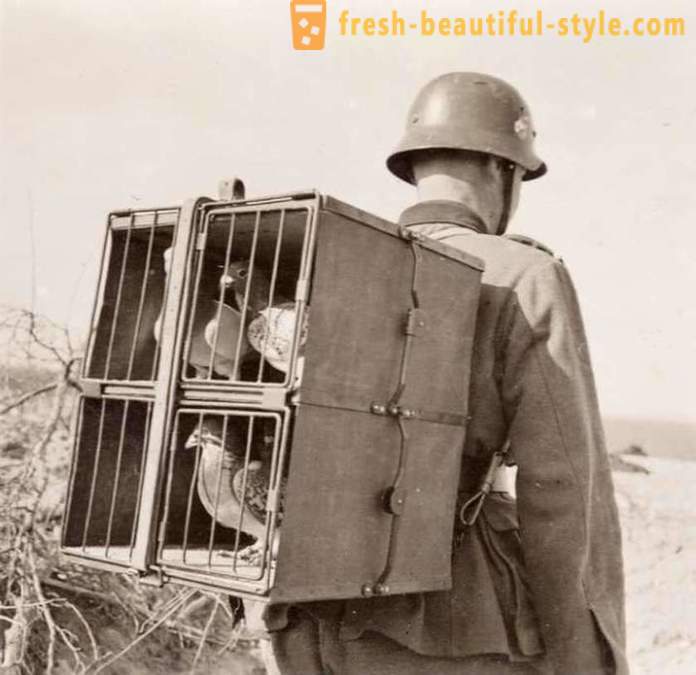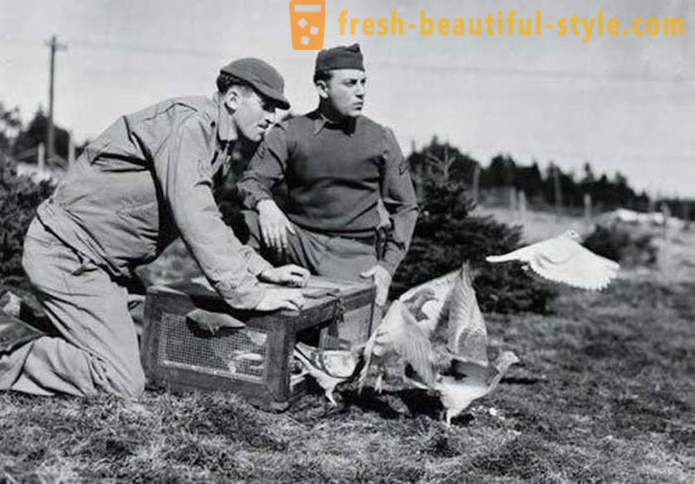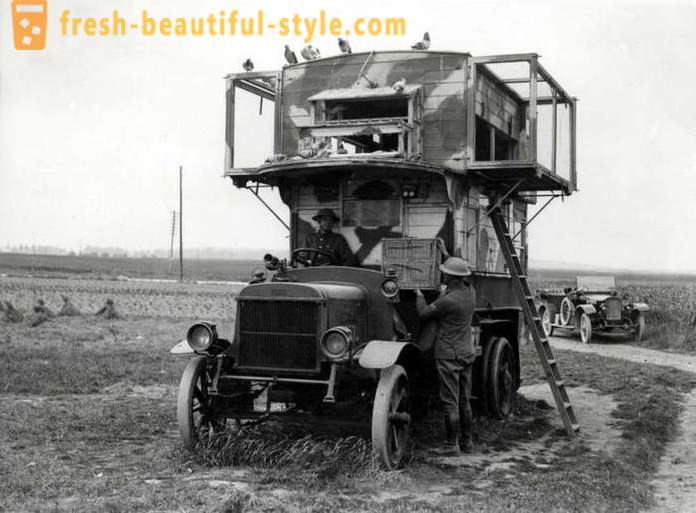Interesting facts from the history of pigeon
• Interesting facts from the history of pigeon
The ability of pigeons orient themselves in space, as well as find their way to their permanent place of residence anywhere in the world looks truly amazing. Well-trained bird is able to post accurately determine the direction and choose the right path, even if you enter it a large dose of anesthesia and in such a state to take away a few thousand kilometers from home. Very useful are the unique skills of the people were able to adapt to their needs.

The first postage dovecote in Russia
To this day it has not been preserved accurate information about the exact time of the beginning of the spread of pigeons in Russia. The earliest materials that shed light on the creation of an official pigeon, dated 1854. They tell about the attempts of Prince Golitsyn pave the way for a bird's mail delivery. In particular - to establish a fast connection between his estate in Moscow and the estate in the village of Sima, who was at a distance of 90 miles.

Homing pigeons in a portable cage.
Other sources like the earlier mention of the formal establishment of pigeon in Russia, have not been found. From this we can conclude that up to the XVIII century pigeons mainly used for personal purposes. Namely, for the transmission of secret love notes and telegrams, who tried to keep secret. at the state level development although it was successful, but it started much later.
In the next few decades, after the successful experience of Prince Golitsyn golubevodstva popularity is rapidly gaining momentum. The result was the creation in 1890, "the Kiev Society of pigeon sport." After a short period of time it was renamed the "Russian society of pigeon sport." Organization fairly quickly gained wide popularity. Up until 1905, under her leadership issued a special magazine "Journal of pigeon sport" regularly held competitions for short and long distances. Since the beginning of the well-known events of the October Revolution work with pigeons gradually fell into disrepair, and more or less began to recover only after 1925
The first Russian military dovecote
The idea to use savvy birds to help Russian troops first occurred to Lieutenant-Captain Arendt in 1873. The man was in Pechersk fortress on a post-parade adjutant and in parallel was engaged in training pigeons, which he bought from the city lovers or ordered from abroad.

The soldiers released the pigeons from a portable cage.
Training the birds began early. Approximately three months they were accustomed to portable cages and regularly took them farther and farther from home, developing orientation ability. When the persistent birds rapidly improve their flight skills and stamina, allowing the best of them to fly for 12 hours without a break. The average speed in this case was from 80 to 100 km.
The idea was a success, and since 1891 all over the country began to establish formal lines of communication pigeon. The first one ran between Moscow and St. Petersburg. Others have joined a number of major stations on the western and southern borders.

Doves fitted with cameras for pictures from the air (1907).
Under General MI Dragomirov pigeon sport has gained special popularity. He has repeatedly initiated the competitions winged postman, seeking to determine the fastest breed. The first bird, which set a record for distance and speed, speckled pigeon became known at the time of the Moscow fancier Domashkeva. It manages six hours cover a distance of 537 km, developing an average speed of 86 km / h.
"Military-pigeon service in the USSR"
Contrary to all predictions, the modern means of communication have not been able to push the carrier pigeon to the other remnants of the past. Moreover, during the Great Patriotic War in the Soviet Union actively used birds in intelligence operations and to deliver important dispatches until 1945.

carrier pigeons extensively used in World War II.
The first prerequisite to ensure that the use of homing pigeons in the public service have appeared much earlier - in 1928. Even then, at the meeting of the Council of Labor and Defense was put to the vote the draft of the "military-pigeon trespass." In 1929, it approved the Order "On making pigeon communication system on the country's weapons", and a year later developed the first of its kind guide for combat training for military units golubevodstva.
Since the beginning of hostilities control over feathered postmen strongly tightened. According to a government decree, the population had to withdraw and destroy all the pigeons as the illegal means of communication. Those who refused to obey the order, was judged by the laws of war. It should be noted that the concealment carried a double threat. During the German occupation, the identification of birds threatened with immediate execution, because the Germans were afraid that the birds will use guerrilla war.
On what is the instinct to return home?
On close examination of the ability of pigeons orient themselves in space completely refute the widespread belief about the exceptional birds stupidity. Their brains are so well developed that is capable of simultaneously processing a number of different operations. Pigeons used to determine its position relative to his home a variety of information: geomagnetic landmarks, infrasound, landscape features. In recent years, put forward the hypothesis of the acute sense of smell of these birds, although previously refuted similar version.

converted into a dovecote bus that the First World War was used in France and Belgium.
Unique is the structure of the pigeon eye. They occupy a large part of the inside of the skull and confer bird impressively sharp vision. Bright individual feature alien to the human body, is the focus of the election. Pigeons are able to "filter" the visual range obtained from the environment by choosing only what is important to them at this moment and ignoring the rest. To determine the time of day they do not need to open your eyes - the difference between light and darkness they feel the skin.
Excellent memory and comprehension complement sharp visual reaction pigeons, which allows them to create complex motion path and skill to operate them.













































